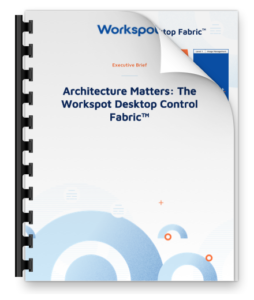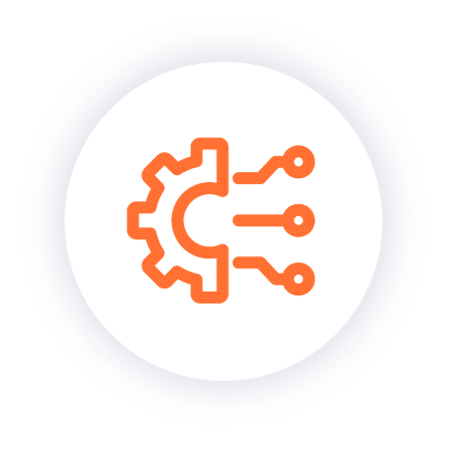Two Critical Conversations You Must Have About VDI
The pandemic forced a massive shift to remote work, and it is clear that going forward a much larger percentage of workers will work remotely. Organizations that deployed quick, short-term solutions for remote workers must now consider what will serve business goals and employees alike for the long term. Flexibility, security, performance and scalability are paramount in these uncertain times. Some organizations chose to expand their use of VDI to meet the demands for remote work. Employees could use their personal or corporate-owned devices to gain access to Windows desktops or to applications running in a data center. The reality is that VDI suffers from significant scalability and agility limitations. Adding infrastructure to support additional users is expensive and complex to deploy, especially when it is unclear how many users will remain remote once shelter in place restrictions are lifted. From an end user perspective, performance can be terrible. VDI in most cases was designed for occasional access to applications – not an eight-hour workday.
There are two conversations you should have about VDI depending on where you’re coming from. In this blog, we’ll help you ask the right questions of virtual desktop and cloud desktop vendors you’re evaluating, so you can be sure your requirements will be met.
Conversation 1: Should I consider a cloud-first strategy?
If you’re using a legacy, on-premises VDI solution, you face a host of limitations, from overwhelming operational complexity and rigidity to slow performance for users who are remote from the data center.
Complex Deployment and Operations
Because legacy on-premises solutions are so complicated and monolithic, both deployment and management are complex. Deployment can take months, involving in-house IT teams and outside consultants to make it happen. Worse, once you’ve deployed, the day-to-day operational overhead is tremendous, requiring experts from multiple departments (desktop, networking, servers, etc.) to contribute to “keeping the lights on” and problem resolution, and those costs add up fast. Customers also tell us they are tired of trying to keep up with the myriad upgrades that are required on a regular basis. There are so many moving parts in the solution that every upgrade is fraught with risk; if the upgrade and a single component of the stack don’t like each other, your users are stuck – they can’t connect to their desktops. It’s no wonder so many enterprises are looking for an alternative. They need to make better use of their IT resources than this.
Rigid Scalability
Even worse is how this complexity affects your ability to respond quickly to a dynamic business environment. Scalability with legacy VDI is difficult and time-consuming, which limits your agility. If you underestimate the number of people who will be using VDI, or perhaps you acquire a company, or if you have thousands of distributed users, you may have to replicate your entire VDI stack multiple times to accommodate them. That’s right. There are only so many users you can support with a single VDI stack. In the modern age of IT, that’s just crazy. It’s difficult and expensive enough to manage one VDI implementation, let alone multiple instances of it. But that’s what you have to do to achieve scalability and to try to get decent performance for your users, because if users are far from the data center, they’re going to experience latency that slows app performance, reduces their productivity, and frustrates everyone. These problems are well understood by most IT people, yet organizations that are not ready to move their desktops to the cloud continue to struggle.
Performance
Everyone has experienced the poor user experience of legacy VDI. As a result, you probably deployed VDI to only a small fraction of users. Can you you now deploy to the entire company and keep users happy?
Topics for discussion
In a nutshell, if you’re running on-premises VDI, the underlying integrated control and data plane that defines these solutions present the following concerns that are important to explore with the vendor:
- Will your users be happy with the performance? Does poor performance affect their productivity?
- Can you scale up and down easily?
- How much down time can you tolerate if an upgrade or system failure causes problems?
Conversation 2: Should I consider an MSP or SaaS?
If you’re using or evaluating cloud desktops, you’re on the right path toward modernity! That’s the good news. You’ve taken some steps toward solving or avoiding the complexity of deploying and managing on-premises VDI or provisioning and managing physical PCs. There are multiple approaches:
- One approach you might take to simplify the operation of virtual desktops is to work with a Managed Service Provider (MSP) who will use another vendor’s VDI solution to host your desktops in a private cloud. This does help alleviate complexity, and if you your users are all close to the MSP’s data center, you could be in pretty good shape from a performance standpoint as well.
- Another approach is to work with a vendor that offers their VDI broker as a service.
- A third approach is to use a turnkey, SaaS desktop as a service solution such as Amazon Workspaces or Workspot.
Each of these solutions reduce the virtual desktop complexity you’ll encounter. From there you have a few key considerations that are really important to explore. Other solutions can also go a long way toward alleviating complexity, but once complexity is off the table, we must turn our attention to a conversation about performance, security, and availability.
Control-Data Plane Separation
The importance of Control and Data plane separation is a virtual desktop architecture discussion that IT leaders must have with vendors. The implications for your business are too important to just gloss over this detail. Admittedly, there are some nuances that are not obvious, and that’s why we have written about virtual desktop architectures and the implications for business requirements so often. For on-premises solutions, the control and data plane are tightly integrated. But that integration doesn’t work well when deploying VDI in the cloud; it’s very difficult to evolve a legacy architecture into a cloud-ready architecture. This is why you need to understand the importance of separating the control and data planes. There are features and benefits you cannot achieve when the VDI control and data planes are integrated.
Performance
The game changes if your organization has users scattered across the country or across multiple countries. In that case, many of your users will be quite a distance from a single data center (whether it’s yours, an MSP’s, or another vendor’s), and that means they will experience latency, which translates to poor performance. In this scenario, you should be looking for the optimal engagement model for all your users all over the world. For your users to have the performance they need, their cloud desktop must be placed in the cloud region closest to them. To achieve this, you need a multi-region solution. And for IT to be able to manage thousands of cloud desktops all over the world, you must select a solution that supports multi-region or even multi-cloud deployments and can be managed from a single admin console. There’s only one solution that does all these things: Workspot.
Security
Most enterprises have a Zero Trust Security strategy, so you’ll need to evaluate solutions from this standpoint. A cloud architecture that integrates the control and data plane cannot comply with your “trust no one” policy. That’s because with these solutions, data traverses the control plane. When we architected Workspot, control and data plane separation was paramount, and one of the reasons is that it’s more secure. Your data never traverses our control plane. They are completely separate. Workspot developers and support people cannot see your data. Trust no one! Not even your virtual desktop vendor – they should not have access to your data.
Availability
When the control and data plane are integrated, it means that you have a single point of failure. If one of the components of the legacy VDI stack fails, your users will not be able to connect to their desktops. This is because those solutions mandate that the cloud desktops check in with the control plane constantly. Conversely, although Workspot has an industry-leading 99.95% uptime, it’s always possible that the control plane could go down briefly. In this case, Workspot persistent cloud desktops just continue to be available – your users don’t miss a beat. This is because unlike other solutions, our cloud desktops don’t need to check in with the control plane continually.
Topics for Discussion
- Does the solution support multi-region and multi-cloud deployment?
- How do you keep my data safe?
- If one component of the VDI stack fails, how do my users continue to work?
As we have outlined, there are many solutions that can help organizations looking to support a work from anywhere strategy. Make sure you ask the right questions to determine the solution that will best meet your needs.
Ready to learn more about the Workspot difference? If you have users distributed around the country or across the globe, let’s talk. Schedule a demo and we can explore your requirements and show you how it works!




